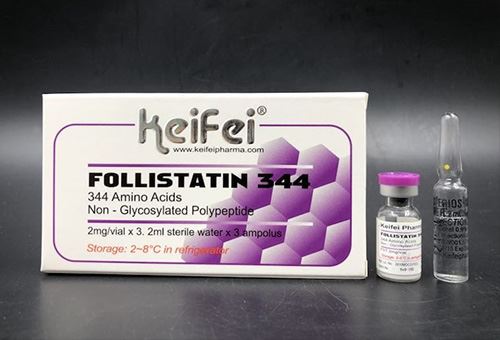


Follistatin is known for its ability to modulate muscle growth by inhibiting myostatin, a protein that restricts muscle mass. This function has spurred interest in follistatin as a potential therapy for muscle-wasting conditions, metabolic disorders, and tissue repair. FS288, the most potent isoform in activin and myostatin inhibition, has gained particular attention for its role in enhancing muscle growth and controlling inflammation. Its effects on muscle physiology make follistatin an attractive candidate for both clinical treatments and sports applications, where muscle health and growth are critical.
Ledger, W. (2001). Inhibin, Activin, and Follistatin in Human Reproductive Physiology. Singapore: Imperial College Press.
Disclaimer: Information provided it this page is for general information only and does not substitute for professional medical advice.
For detailed information about FOLLISTATIN 344 by Keifei Pharma, consult with your doctor or healthcare professional.


Ledger, W. (2001). Inhibin, Activin, and Follistatin in Human Reproductive Physiology. Singapore: Imperial College Press.

Ledger, W. (2001). Inhibin, Activin, and Follistatin in Human Reproductive Physiology. Singapore: Imperial College Press.

Ledger, W. (2001). Inhibin, Activin, and Follistatin in Human Reproductive Physiology. Singapore: Imperial College Press.